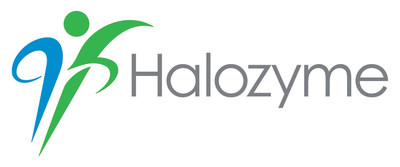 Minninv
6 días hace
Minninv
6 días hace
Is it strange for HALO to put out an 8-k on Friday, March 21 at 4:03 pm, after the market closed for the week, regarding the March 17 retirement of Michael LaBarre?
Item 5.02. Departure of Directors or Certain Officers; Election of Directors; Appointment of Certain Officers; Compensatory Arrangements of Certain Officers.
(b) On March 17, 2025, Michael J. LaBarre, Senior Vice President, Chief Technical Officer of Halozyme Therapeutics, Inc. (the “Company”) notified the Company of his decision to retire from the Company, effective March 17, 2025. The Company thanks Mr. LaBarre for his many years of service and contributions to the Company’s ENHANZE® drug delivery technology.
 Minninv
6 días hace
Minninv
6 días hace
Michael LaBarre Biography and Net Worth
Chief Technical Officer of Halozyme Therapeutics
Dr. LaBarre brings to Halozyme more than 25 years of experience across all aspects of biopharmaceutical research and drug development, including strong expertise in chemistry, manufacturing, and controls (CMC), regulatory strategy and product development. Dr. LaBarre joined Halozyme in 2008 and has held leadership positions in product development, alliance management, research, and regulatory affairs during that time. He is currently responsible for providing scientific and technical leadership across all Halozyme programs and is the lead expert on Halozyme’s ENHANZE® drug delivery technology.
Prior to Halozyme, Dr. LaBarre served as Vice President of Product Development at Paramount BioSciences, LLC, where he led CMC and research efforts for the product development programs within Paramount’s portfolio companies. Prior to joining Paramount, Dr. LaBarre served from 1995 to 2006 in various research and development positions at Biogen Idec (formerly IDEC before the merger with Biogen in 2004), where he supported numerous IND and BLA submissions, including those for the commercial products RITUXAN® and ZEVALIN®. Prior to IDEC, Dr. LaBarre spent two years at Vical, Inc. and he began his career at Hybritech in San Diego in 1992. Dr. LaBarre also taught chemistry laboratory for several years as an adjunct professor at Mesa Community College early in his career.
Dr. LaBarre received his B.S. in Chemistry from Southampton College of Long Island University and his Ph.D. in Chemistry from the University of Arizona.
What is Michael J. LaBarre's net worth?
The estimated net worth of Michael J. LaBarre is at least $11.11 million as of February 27th, 2025. Dr. LaBarre owns 173,756 shares of Halozyme Therapeutics stock worth more than $11,114,303 as of March 21st. This net worth approximation does not reflect any other investments that Dr. LaBarre may own. Additionally, Dr. LaBarre receives a salary of $843,890.00 as Chief Technical Officer at Halozyme Therapeutics.Learn More about Michael J. LaBarre's net worth.
How old is Michael J. LaBarre?
Dr. LaBarre is currently 60 years old. There are 2 older executives and no younger executives at Halozyme Therapeutics. The oldest executive at Halozyme Therapeutics is Dr. Helen I. Torley M.B. Ch. B., M.R.C.P., President, CEO & Director, who is 61 years old. Learn More on Michael J. LaBarre's age.
 maumar
1 semana hace
maumar
1 semana hace
And some positive news in regards to Vyvart. Competitive threats matter. From JPM:
Argenx
Immunovant MG/CIDP Bato FcRn data doesn’t look like a significant competitive threat, another potential headwind dismissed.
Immunovant today reported Phase III/IIb MG and CIDP data for it’s first gen FcRn, Bato. Bato Phase III MG efficacy looks below Argenx’s Vyvgart, and bato Phase IIb CIDP data is hard to directly compare to Vyvgart, but bato also doesn’t seem to be better. In addition, there was limited disclosure on safety, but we assume bato will still have cholesterol issues not seen with Vyvgart, hence Immunovant’s focus on next generation FcRn IMVT-1402, theoretically cleaner, which is just starting Phase III, and Immunovant don’t plan to file bato for MG or CIDP. Given bato had been flagged as a potential competitive risk/negative read-through to Argenx Vyvgart in terms of Immunovant’s next gen IMVT-1402 on the back of this bato update, we see the absence of a superior bato profile as a positive for Argenx shares, removing what some had feared could be a significant competitive threat.
 Fred Kadiddlehopper
1 semana hace
Fred Kadiddlehopper
1 semana hace
In not so good news: Trump Administration Wants to Cut HIV-Prevention Funding
https://www.barrons.com/articles/boeing-stock-outlook-investors-af96015c
Gilead Sciences
GILD
-2.96%
stock declined Wednesday after The Wall Street Journal reported the Department of Health and Human Services was considering federal funding cuts to domestic HIV prevention.
The Centers for Disease Control and Prevention, an arm of the HHS, has a Division of HIV Prevention dating back to the 1980s. In addition to tracking HIV infections across the country, it focuses on community outreach, working with state and local leaders to promote testing and prevention.
Congress enacted a spending bill in 2023 that appropriated nearly $1.4 billion to the CDC for HIV prevention and that of other infectious diseases. The Journal report comes amid a broader push by the Trump administration to slash federal spending.
Gilead stock fell 2.9% to $107.03 on Wednesday. The biotech focuses on virology, oncology, and inflammation, and brands itself the “long-standing leader” in HIV treatment. Gilead is the maker of Biktarvy and Descovy, two antiretroviral drugs used to prevent and treat the virus.
In January, the company settled a lawsuit with the CDC claiming Gilead refused to license the agency’s patents and ignored its contributions to the development of pre-exposure prophylaxis, or PrEP, a medication regimen that can help prevent HIV.
ViiV Healthcare, a multinational company specializing in the research and development of HIV treatments, also could be affected by funding cuts. ViiV is a joint venture of GSK
GSK
-1.57%
, Pfizer
PFE
-0.06%
, and Japanese pharma company Shionogi.
Write to Mackenzie Tatananni at mackenzie.tatananni@barrons.com
 Fred Kadiddlehopper
1 semana hace
Fred Kadiddlehopper
1 semana hace
Acumen Pharmaceuticals Announces Topline Results from Phase 1 Study of Subcutaneous Formulation of Sabirnetug in Healthy Volunteers
https://investors.acumenpharm.com/news-releases/news-release-details/acumen-pharmaceuticals-announces-topline-results-phase-1-study
March 19, 2025 at 8:00 AM EDT
Download PDF
Weekly subcutaneous administration of sabirnetug was well-tolerated in the Phase 1 study
Systemic exposure following subcutaneous administration supports further clinical development
Development of sabirnetug delivered subcutaneously has the potential for decreased treatment burden and increased patient convenience
NEWTON, Mass., March 19, 2025 (GLOBE NEWSWIRE) -- Acumen Pharmaceuticals, Inc. (NASDAQ: ABOS), a clinical-stage biopharmaceutical company developing a novel therapeutic that targets soluble amyloid beta oligomers (AßOs) for the treatment of Alzheimer’s disease (AD), today announced topline results from its Phase 1 study comparing pharmacokinetics (PK) between subcutaneous (SC) and intravenous (IV) formulations of sabirnetug in healthy volunteers. Weekly SC administration of sabirnetug was well-tolerated with systemic exposure supporting further clinical development.
“We are pleased that the results of our initial clinical study support further clinical development of sabirnetug administered subcutaneously, underscoring the potential for increasing patient convenience of this formulation relative to intravenous treatment,” said Daniel O’Connell, Chief Executive Officer of Acumen. “The timely completion of this study highlights the strength of our clinical team and partners, and our commitment to advancing our clinical pipeline efficiently and effectively. Based on these data, we believe that further development of subcutaneous sabirnetug as a more convenient administration option for patients is warranted.”
The Phase 1 study in healthy volunteers enrolled 12 subjects who received single IV doses of 2,800 mg and 16 subjects who received four weekly SC doses of 1,200 mg. The most frequently reported adverse events included injection site reactions (62.5%), all of which were mild (Grade 1) in severity and resolved. No other safety signals were identified. Importantly, SC administration of sabirnetug produced sufficient systemic exposure to enable further clinical studies of SC dosing.
Sabirnetug is the first humanized monoclonal antibody to clinically demonstrate selective target engagement of AßOs in patients with AD. The SC formulation of sabirnetug is co-formulated with Halozyme’s proprietary ENHANZE® drug delivery technology (recombinant human hyaluronidase enzyme, rHuPH20) that enables large volume SC injection with increased dispersion and absorption of co-administered therapies. ENHANZE® has been commercially validated as a component of nine approved therapies.
The Phase 2 ALTITUDE-AD study of IV sabirnetug is currently ongoing.
About Sabirnetug (ACU193)
Sabirnetug (ACU193) is a humanized monoclonal antibody (mAb) discovered and developed based on its selectivity for soluble amyloid beta oligomers (AßOs), which are a highly toxic and pathogenic form of Aß, relative to Aß monomers and amyloid plaques. Soluble AßOs have been observed to be potent neurotoxins that bind to neurons, inhibit synaptic function and induce neurodegeneration. By selectively targeting toxic soluble AßOs, sabirnetug aims to address the hypothesis that soluble AßOs are an early and persistent underlying cause of the neurodegenerative process in Alzheimer’s disease (AD). Sabirnetug has been granted Fast Track designation for the treatment of early AD by the U.S. Food and Drug Administration and is currently being evaluated in a Phase 2 study in patients with early AD.
About ALTITUDE-AD (Phase 2)
Initiated in 2024, ALTITUDE-AD is a Phase 2, multi-center, randomized, double-blind, placebo-controlled clinical trial designed to evaluate the efficacy and safety of sabirnetug (ACU193) infusions administered once every four weeks in slowing cognitive and functional decline as compared to placebo in participants with early Alzheimer's disease. The study will enroll approximately 540 individuals with early Alzheimer’s disease (mild cognitive impairment or mild dementia due to AD). The global study is currently ongoing at multiple investigative sites located in the United States, Canada, UK, and the European Union. More information can be found on www.clinicaltrials.gov, NCT identifier NCT06335173.
About Halozyme’s ENHANZE® Technology
Halozyme's commercially validated proprietary ENHANZE® drug delivery technology is based on its patented recombinant human hyaluronidase enzyme (rHuPH20). rHuPH20 has been shown to remove traditional limitations on the volume and delivery rates of biologics that can be delivered subcutaneously (just under the skin). By using rHuPH20, some biologics and compounds that are administered intravenously may instead be delivered rapidly in minutes subcutaneously. ENHANZE® may also benefit subcutaneous biologics by reducing the need for multiple injections.
About Acumen Pharmaceuticals, Inc.
Acumen Pharmaceuticals is a clinical-stage biopharmaceutical company developing a novel therapeutic that targets toxic soluble amyloid beta oligomers (AßOs) for the treatment of Alzheimer’s disease (AD). Acumen’s scientific founders pioneered research on AßOs, which a growing body of evidence indicates are early and persistent triggers of Alzheimer’s disease pathology. Acumen is currently focused on advancing its investigational product candidate, sabirnetug (ACU193), a humanized monoclonal antibody that selectively targets toxic soluble AßOs, in its ongoing Phase 2 clinical trial ALTITUDE-AD (NCT06335173) in early symptomatic Alzheimer’s disease patients, following positive results in its Phase 1 trial INTERCEPT-AD. The company is headquartered in Newton, Mass. For more information, visit www.acumenpharm.com.
Forward-Looking Statements
This press release contains forward-looking statements within the meaning of The Private Securities Litigation Reform Act of 1995. Any statement describing Acumen’s goals, expectations, financial or other projections, intentions or beliefs is a forward-looking statement and should be considered an at-risk statement. Words such as “potential,” “will” and similar expressions are intended to identify forward-looking statements, although not all forward-looking statements contain these identifying words. Forward-looking statements include statements concerning the therapeutic potential and potential clinical efficacy of Acumen’s product candidate, sabirnetug (ACU193) and its subcutaneous formulation. l. These statements are based upon the current beliefs and expectations of Acumen’s management, and are subject to certain factors, risks and uncertainties, particularly those inherent in the process of discovering, developing and commercializing safe and effective human therapeutics. Such risks may be amplified by the impacts of geopolitical events and macroeconomic conditions, such as rising inflation and interest rates, supply disruptions and uncertainty of credit and financial markets. These and other risks concerning Acumen’s programs are described in additional detail in Acumen’s filings with the Securities and Exchange Commission (“SEC”), including in Acumen’s most recent Annual Report on Form 10-K, and in subsequent filings with the SEC. Copies of these and other documents are available from Acumen. Additional information will be made available in other filings that Acumen makes from time to time with the SEC. These forward-looking statements speak only as of the date hereof, and Acumen expressly disclaims any obligation to update or revise any forward-looking statement, except as otherwise required by law, whether, as a result of new information, future events or otherwise.
Investors:
Alex Braun
abraun@acumenpharm.com
Media:
Jon Yu
ICR Healthcare
AcumenPR@icrhealthcare.com
 maumar
1 semana hace
maumar
1 semana hace
We can only speculate and Halo's PPS rise may be related to a potential settlement with Merck and Astra Zeneca (though the fact that Alteogen added about $1.8B in market cap today certainly suggests the market doesn't think Halo's case is strong enough to get an injunction to stop the sale of SC Keytruda) but it could also be due to the string of unexpected positive news we've had recently.
Darzalex, Phesgo and Vyvgart have all been exceeding expectations to a significant degree, HexaBody-CD38, Genmab's competitor to Darzalex, failed and clinical development ended, and Vyvgart has a few near-term catalysts. Vyvgart Hytrulo won't be another Darzalex FasPro but it is shaping up to become Halo's second best-selling product. Today JPM increased ARGX's PT to $805:
"We update our model, making 3-9% 2025-29E Revenue upgrades, driven by faster CIDP uptake. We update our estimates for faster than anticipated uptake of Vyvgart in CIDP, where ARGX reported >1,000 patients on treatment at the end of Q4’24. This drives our 3-9% increase in Product sales expectations for 2025-29E.
For FY’25, our updated Revenue forecasts are 4% ahead of Bloomberg consensus and our Operating Profit is c.30% ahead: Our updated Revenue forecasts for the year are c.4% ahead of latest BBG Consensus estimates at $3.8bn vs. Cons. at $3.65bn.
Key upcoming catalysts: (i) PDUFA for Pre-Filled Syringe for Vyvgart on April 10th, 2025, which we see driving uptake given far greater convenience with self-administration; (ii) Q1’25 results on May 8th, where we forecast product sales for Vyvgart of $826m, 8% ahead of latest BBG Cons. of $765m; and (iii) presentation of Vyvgart Phase II data for Myositis, likely at EULAR, 11-14 June, which will provide more insight into efficacy in the different subgroups including IMNM (Immune-Mediated Necrotizing Myopathy), ASyS (Antisynthetase syndrome) and DM (Dermatomyositis). We currently model Myositis as a $1.6bn peak sales opportunity, which we include at a 50% risk adjustment, though we note given similar patient numbers to MG (63k Myositis in the US, vs. 60k for MG) and with less competition, Myositis could be a multi-billion $ peak sales opportunity."


 Hot Features
Hot Features






